In Terekeka County, South Sudan, a painful, parasitic disease called Guinea worm once ravaged the population. It hindered villagers' ability to farm, go to school, cook, or take care of their children. But in 2011, this county saw its last Guinea worm infection, and today, thanks to the unwavering dedication of health care workers and the people of Terekeka, the county remains Guinea worm-free.
With only 22 cases of Guinea worm disease provisionally reported worldwide in 2015, down from an estimated 3.5 million worldwide cases in 1986, experts believe the three decade-long eradication campaign, led by The Carter Center, is nearing the finish line. The four remaining endemic countries are Chad, Ethiopia, Mali, and South Sudan. Despite many challenges, South Sudan has made great progress toward eliminating Guinea worm, reducing case numbers by more than 99 percent since 2006.
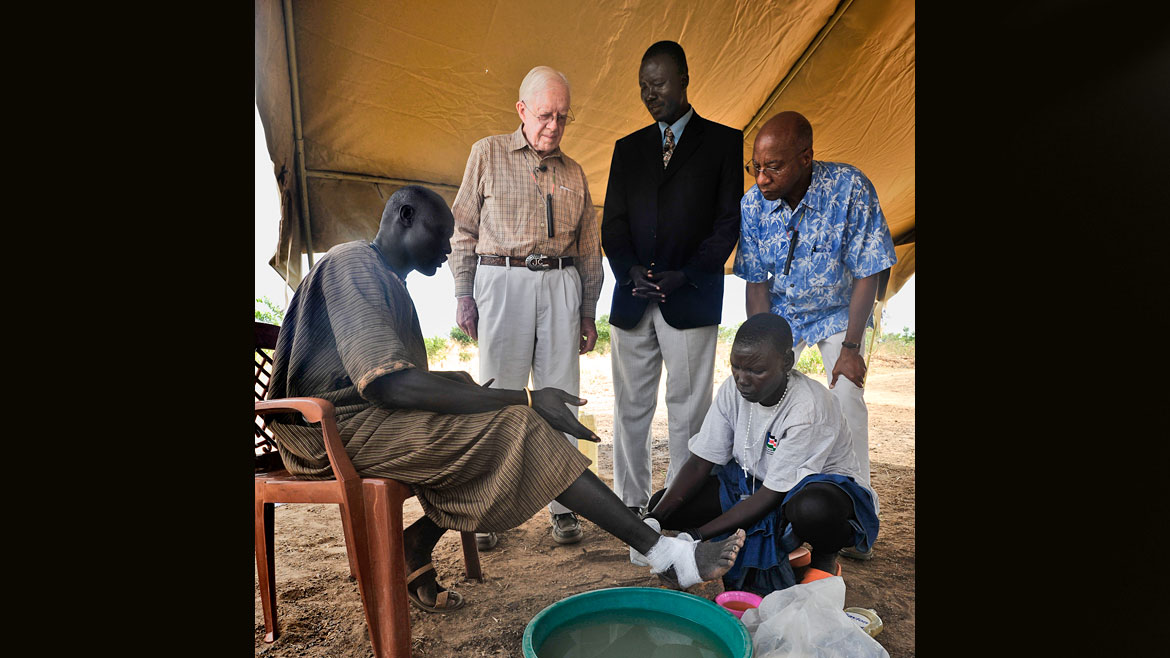
In 2010, health volunteer Viviana Kolong treated Garbino Kenyi, a farmer from Terekeka County, South Sudan, with a Guinea worm emerging from his foot. Former U.S. President Jimmy Carter; Makoy Samuel Yibi, national coordinator of the South Sudan Guinea Worm Eradication Program; and Dr. Donald Hopkins, vice president of Carter Center Health Programs, observed as she bandaged the wound to keep it clean and prevent infection. (All Photos: The Carter Center/ L. Gubb)
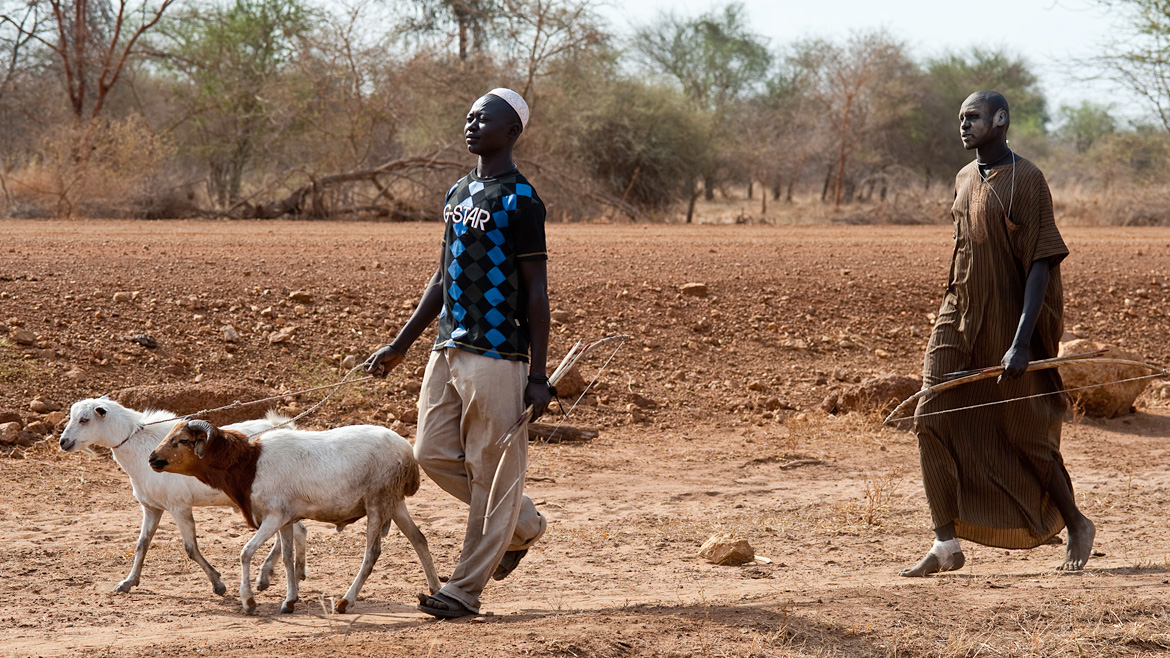
A waterborne parasitic infection, Guinea worm disease incubates in a person for about a year before the worms emerge from the body, painfully and slowly, through blisters in the skin. Despite the agony of a worm emerging from his foot, Garbino (right) walked with his brother to market to sell their goats.
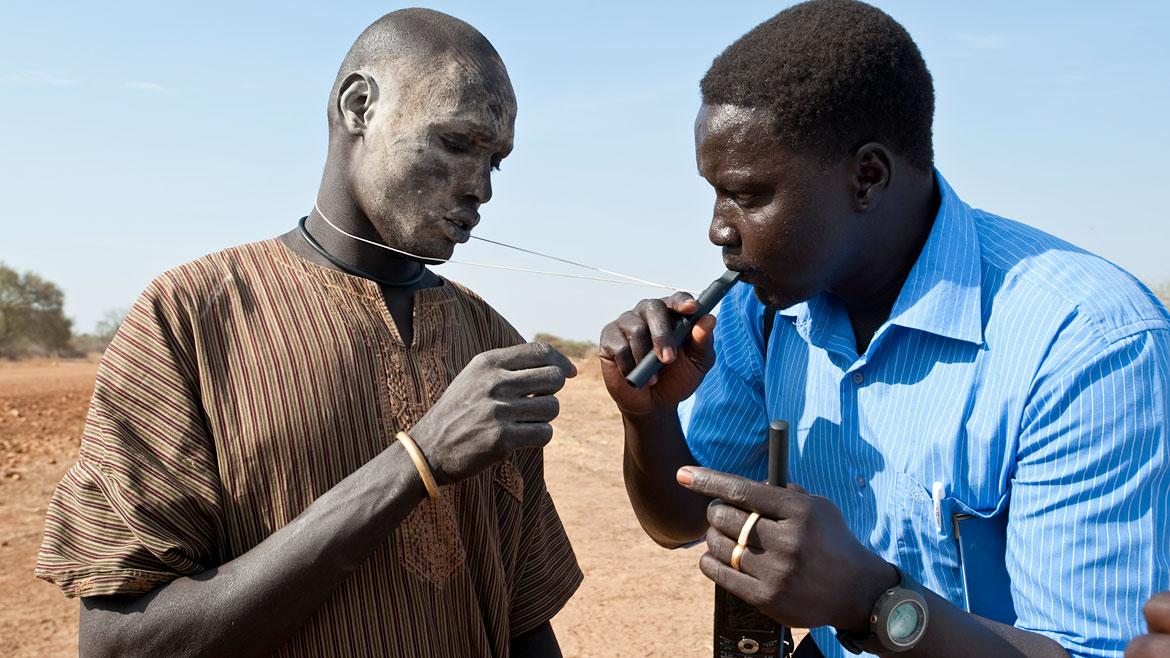
Portable pipe filters have been essential to the campaign to eradicate Guinea worm disease, allowing villagers to drink water from any source without fear of contracting the waterborne parasite. James Madol (right), a Carter Center technical adviser, showed Garbino how to use a pipe filter, donated by Vestergaard’s LifeStraw®.
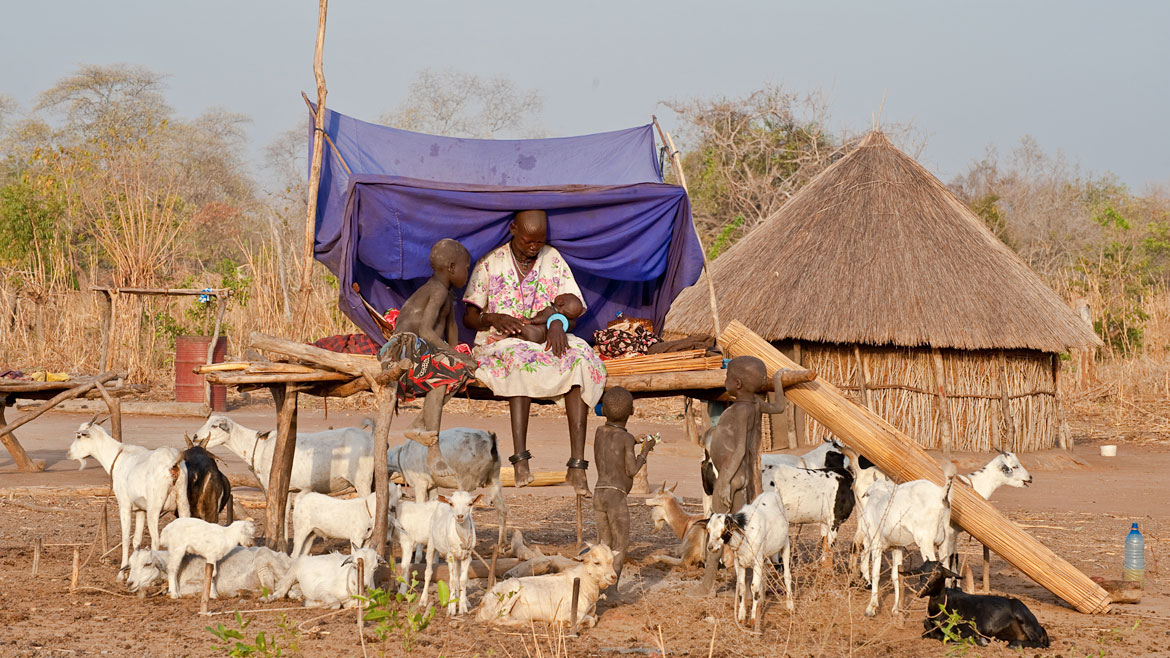
Around this time, Garbino's wife, Cezerina Puru Ladu, delivered their first child, a daughter named Margaret Yiko. She was born just before Garbino’s Guinea worm emerged.
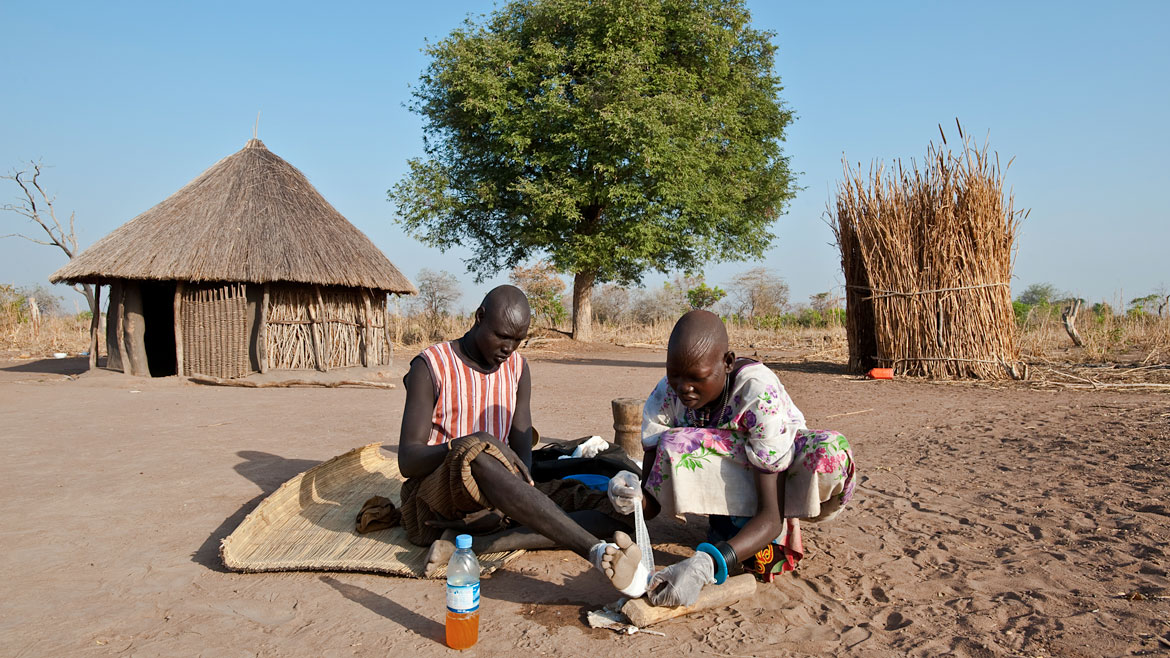
Trained as a Guinea worm health volunteer, Cezerina Puru cared for her husband's foot at their home in Senwei Village. Garbino's infection was one of the last reported cases of Guinea worm disease in Terekeka County.
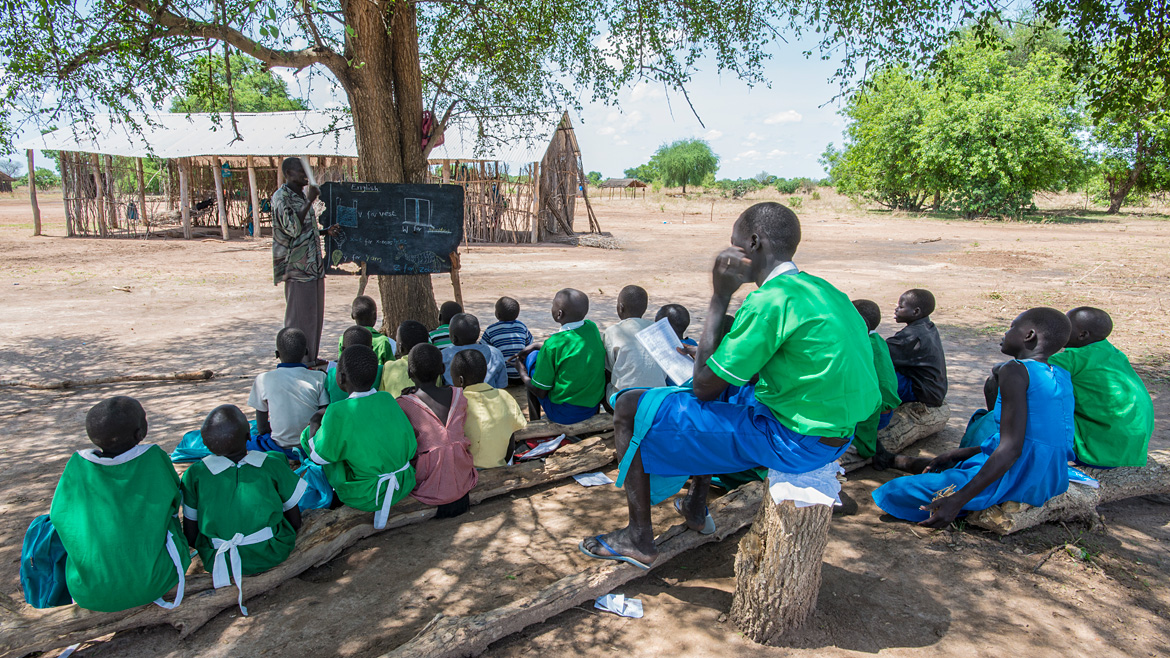
Before the efforts of the Guinea Worm Eradication Program, infected children in Terekeka often missed school because of the debilitating pain caused by emerging worms.
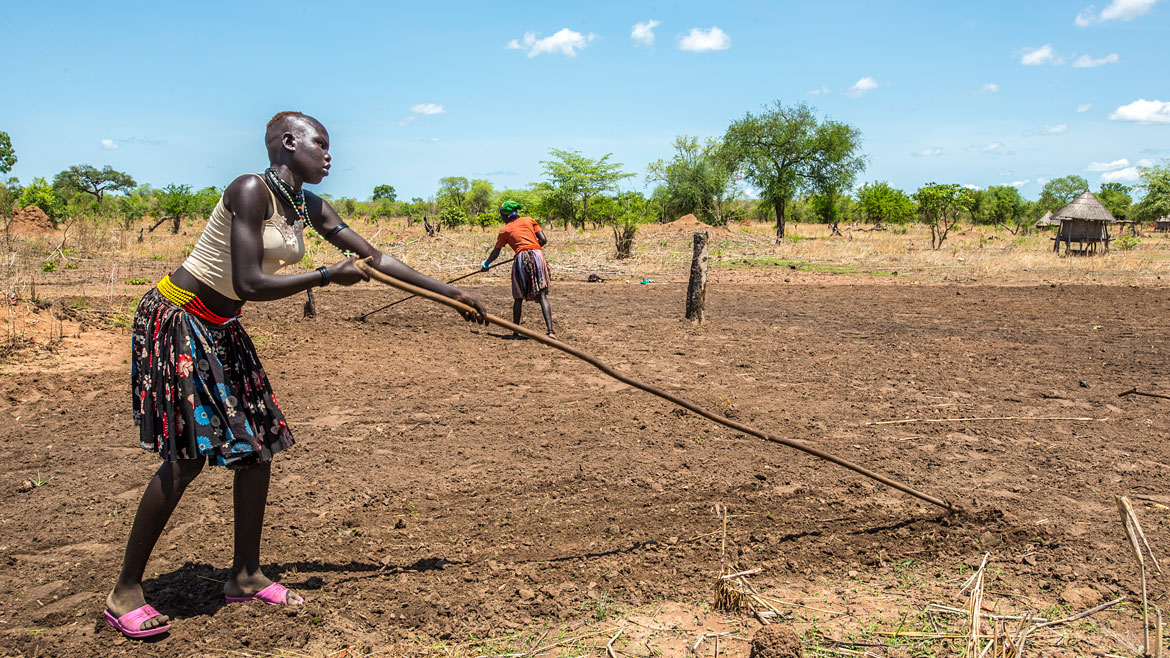
Farm workers in this area, like Garbino's female relatives seen here, were burdened by the disabling effects of the disease, unable to plant sorghum in their fields and provide for their families.
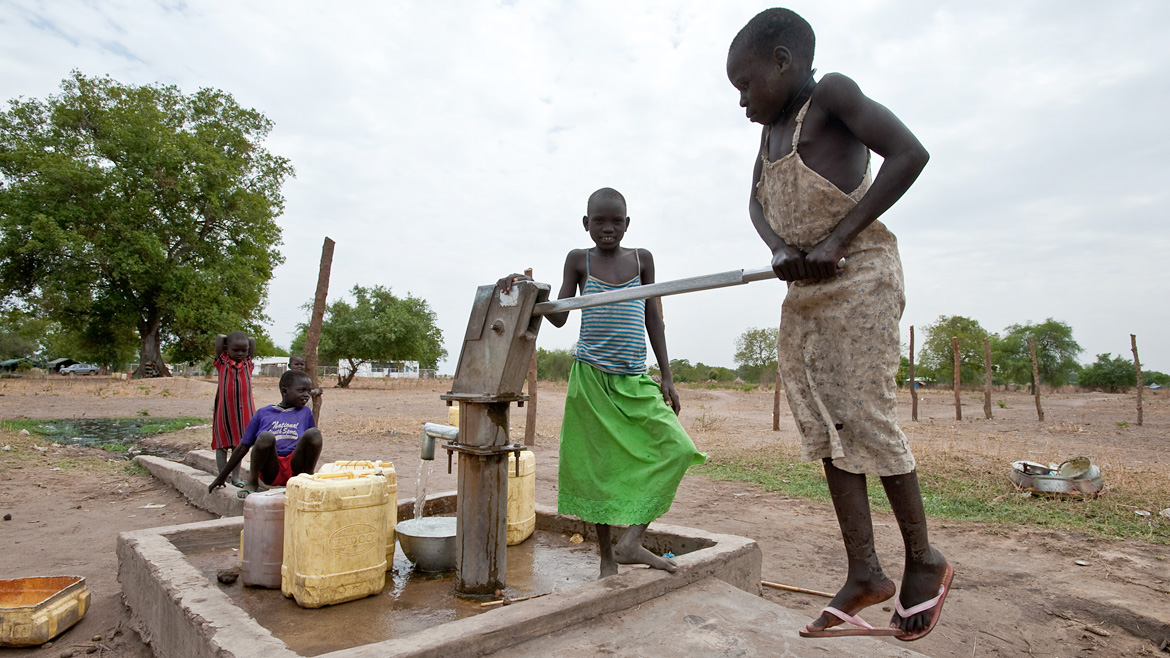
But health education and low-tech strategies — like teaching communities to collect water from safe boreholes, which produce clean drinking water — helped the Carter Center-led campaign succeed in eliminating this disease from Terekeka County.
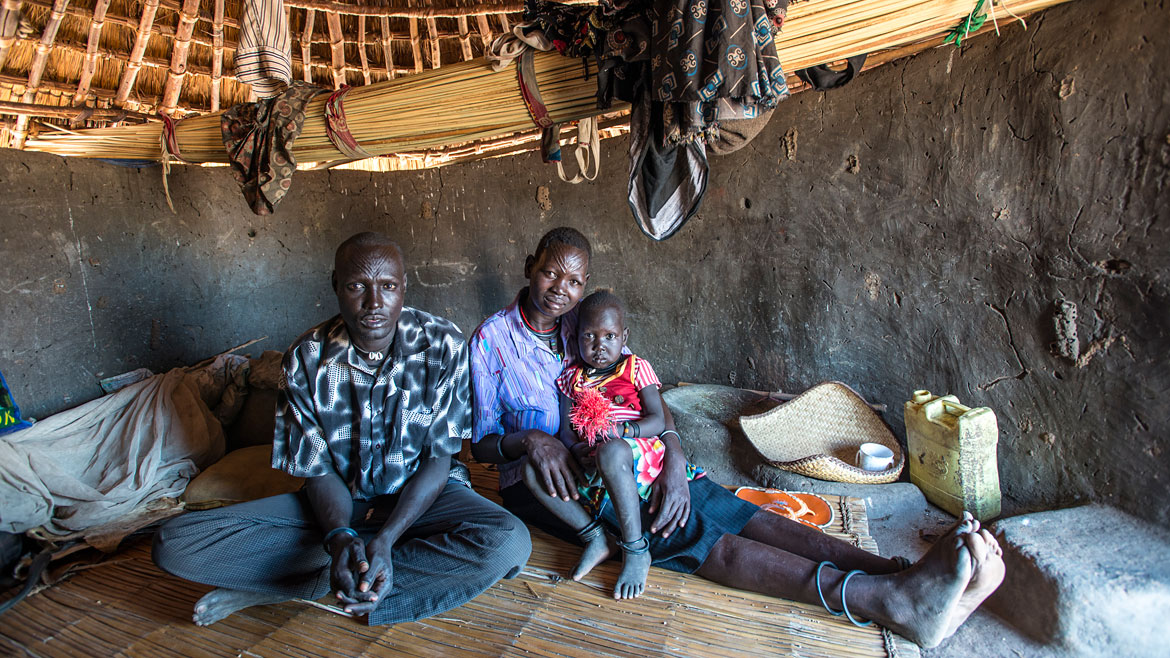
Today, free from the horrors of Guinea worm disease, Garbino, Cezerina Puru, Margaret, and everyone in Terekeka County — who have demonstrated an unwavering commitment to eliminating this disease — can hope for a better and more peaceful future.